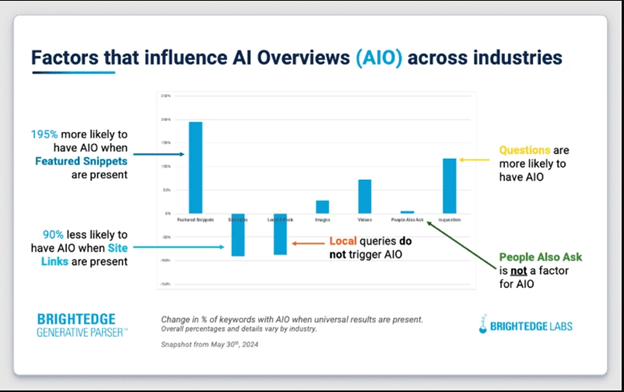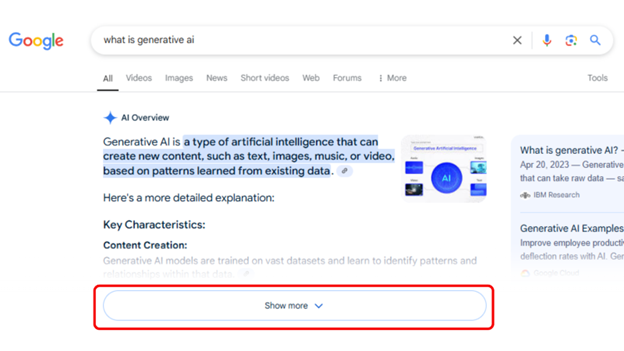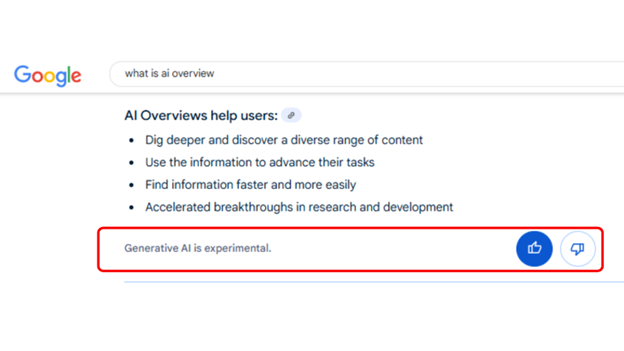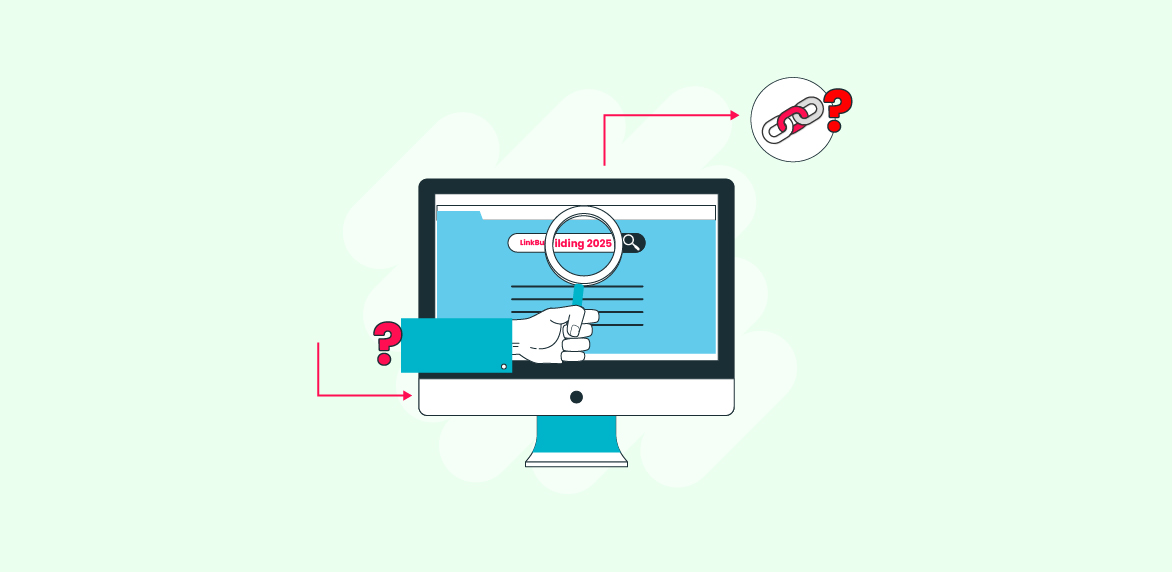How To Adapt to AI Overviews To Ace The New SERP?
AI Overviews are the new ‘snippets’ in Google search, and they are here to stay. So, instead of wallowing over the fact that it is taking over the zero position, it’s time to switch the gears to adapt to this latest integration.
Let’s dive deeper into this discourse to understand what AI Overviews are, and how we can optimize for them to land the topmost position.
Read ahead or watch this video for a detailed explanation on how to optimize for AI overviews.
What Are AI Overviews?
An AI Overview is a summarized text combining information from the most reliable sources on the internet, and is often the first thing you see on the search results page. It is triggered for a large number of search queries, and can be seen before or after paid ads.
An AIO can appear in multiple formats to deliver information in an easy-to-digest manner. It can be a paragraph, bullet points, listicles, carousals, or images. In short, it shows information in a structure that’s most precise, but covers all basis in terms of knowledge on the subject.
When Were AIOs Introduced?
Google introduced AIOs as an alternative to SGEs back in May 2024. This was an upgrade from the previous Search Generative Experiences model of 2023, which was mainly a test run used by Google to see how AI can be utilized to improve search in Google Labs. Both of these models were based on the Google Gemini AI-Language Model, and have been a great asset for search engines, helping them match users with relevant answers.
According to the latest statement by Google,
“AI Overviews are one of our most popular Search features — now used by more than a billion people — and we’re continuing to advance and improve the experience to make them even better.”
In the future, they are planning to launch Gemini 2.0 with the capability to answer difficult questions related to technical fields like coding, math, and more.
How Often Do AI Overviews Appear On SERP?
AIOs do not appear for all searches on the web. Many search queries still show conventional Google features and listed sites. So, how do we know if the keywords we are targeting actually show up in AIOs? The most effective way is to manually enter your targeted query into the search bar to check what appears.
To further clarify this, Brightedge studied some data points to help marketers understand the frequency at which AIOs show up on search results pages. In general, about 15% of queries return AIOs for US audiences. The segmentation can further be evaluated based on the following points:
- Type of industry (Food, Retail, and hospitality show lesser frequency, whereas Healthcare, and Tech show higher AIO results).
- Informational queries are more likely to return AIOs.
- Less likely to show up with Local Packs.
- 195% better chance with a Featured Snippet.
Have a look at the data points below to further understand the correlation of different Google features and elements with AIOs.
For marketers, it’s essential to assess whether their search queries are more informational or transactional in nature. This will help them predict whether AIOs appear for their search queries, and simultaneously determine whether they need to put efforts into optimizing for the new feature or not.
What Did AIOs Change On SERP?
AIOs have essentially transformed the face of the SERPs with their upfront answers that instantly resolve millions of queries every day. But how exactly has it impacted the SERP? And what are some of the common features of AIOs that make them different from other Google features like snippets, Image Packs, and Video Snippets? Let’s discover below:
Show More Option — All AI Overviews feature a “Show More” option at the bottom. You can click to expand the answer and discover details about the topic. It might also show citations as information sources, highlighting the credibility of the information.
Featured Sites—About 84.72% of AIOs enlist websites, either as citations or as sources of additional information.
Feedback Questions — AI Overviews have been made interactive for the purpose of improving the search results. You might see a thumbs-up or down question at the end of the AI snippet, as seen in the snapshot below.
Allows Limitations—You can change your search settings in Google Labs to enable or disable AI Overviews. While the turn-off feature does not completely remove them from your search, they might appear less often. On the other hand, enabling them will ensure richer and more detailed answers with product carousals, citations, and other features.
Complex & Detailed Answering —Google has been testing AI Mode in Google Labs, and if successful, it will transform the AIOs forever! It allows prompt answers to difficult questions without having to rephrase the query multiple times to get a relevant response. Best part? You can search with voice, camera, images, and text.
Additionally, the Gemini 2.0 allows comparative analysis, reasoning, and detailed discovery right within the search engine results page, making it a tool for navigating directly to almost all answers related to a topic. This is only available to subscribed members in the US, but soon will be out of the testing phase to become accessible worldwide.
How To Optimize For AI Overviews?
Google says there’s nothing we can do as publishers to ensure we position ourselves in AI Overviews. However, many studies and theories suggest that certain tricks and techniques can get you to improve your chances of getting featured in the AI overview section on SERPs. Let’s see what it is:
Provide Clear & Concise Answers
AI models are almost always looking for short answers, which is why addressing queries directly is the right trick to set the tone of your AI optimization strategy. Make sure to provide value through helpful content that can be used as a preview for the seed topic.
Pro Tip: Try to add key takeaways in the first few paragraphs of content, and use headings to organize content appropriately.
Use Various Formats
Add different forms of content to enrich and improve your posts, articles, and web content. AI models can identify interactive content, such as infographics, tables, bullets, and videos. We have an entire article discovering the power of video content marketing in SEO. It highlights that by engaging users through interactive tools and elements, your content is more likely to get featured as rich results or visual aid on the search engine results page.
Consider Domain Age
This one is a hypothesis — but one that’s still being discussed in the Reddit Blogging community. The possibility that your domain has something to do with your ability to appear on AIOs may be a reasonable argument, given that older websites can be attributed to improved topical authority.
Older domains that have been on the web for more than 15 years have an advantage in this case. However, younger domains can also optimize by means of simple, helpful, and accessible answers addressing common user queries.
Update Consistently
Outdated content is often considered less reliable by search engines, which is why consistent updates are the surest route to remain in the line for AIO featured lists. Keep your information fresh and reliable to show search engines your site features latest information. Support content with stats and data points to highlight your expertise on the subject matter.
Work On Technical SEO
AI does not necessarily consider technical data points to prioritize sites, but it does rely on structurally comprehensible content and data. By optimizing all the technical aspects of your site, you can ensure that your website is effectively interpreted and displayed in AI Overviews.
Here are a few things you can do to make sure your content is accessible and represented appropriately.
- Clearly define page hierarchy.
- Link pages internally to transfer credibility to the topical content.
- Address crawl errors and 404s.
- Use structured markup for your site.
- Eliminate duplication and apply canonicalization where necessary.
- Work on Core Web Vitals to improve UX.
This technical SEO checklist is guaranteed to boost your chances of getting featured — provided you maintain quality content, regular updates, and consistent monitoring.
Monitor Progress Consistently
Monitoring progress is essential for AI, as it is going to help you identify which strategies are working and which ones aren’t. But how exactly can you track your AI visibility? A combination of traditional SEO metrics with emerging techniques has to be the perfect combo.
- Your CTR is an indication of how well your site may be doing in search results, but it also helps determine if you’re getting any traffic via AIOs. Keep track of this metric to monitor for downward trends that might indicate a strategic lagging.
- Keep an eye out on the “Search Appearances” on Google Search Console to check if it introduces AI data snippets. This will be a significant development in the search, as it will allow brands to assess any clicks and impressions they get through AIOs.
- Keep an eye out for referral traffic from AI tools like ChatGPT, Perplexity, Bing Copilot, and Google AI Overviews (AIO) to estimate the current accessibility of your content to commonly used AI sources.
- Your site’s performance in featured snippets is an indirect indication of your ability to appear in AI overviews. Tracking performance trends of SERP features shows how well your site is doing in rich results, and AIOs are ultimately the same thing. While featured snippets and AIOs are different features of the SERP, the correlation here may be reasonable for predictive analysis.
To sum it up, AI is the forthcoming trend on SERP that can’t be ignored if brands wish to maintain a consistent stream of traffic to their website. Now is the time to work on AI visibility for your targeted keywords to optimize CTR, retain traffic, and bolster your credibility on the search. The CEO of Scrunch AI also emphasizes this point by sharing what his customer data has shown in the past years:
“Across our customers, we’ve consistently seen that traffic from AI search is not just growing — it’s also the highest-converting source of inbound traffic.”
This is why the key to staying in the zero position is to remain vigilant for the new Google I/O updates that are currently redefining the way search engines work and respond. Keeping on-trend means adapting to the new era of AI. Your benchmark strategy should involve consistent content refinement, smart formatting, technical SEO, regular updates, and a data-driven approach. This all-rounder strategy will be the road to success in your AI optimization journey.











